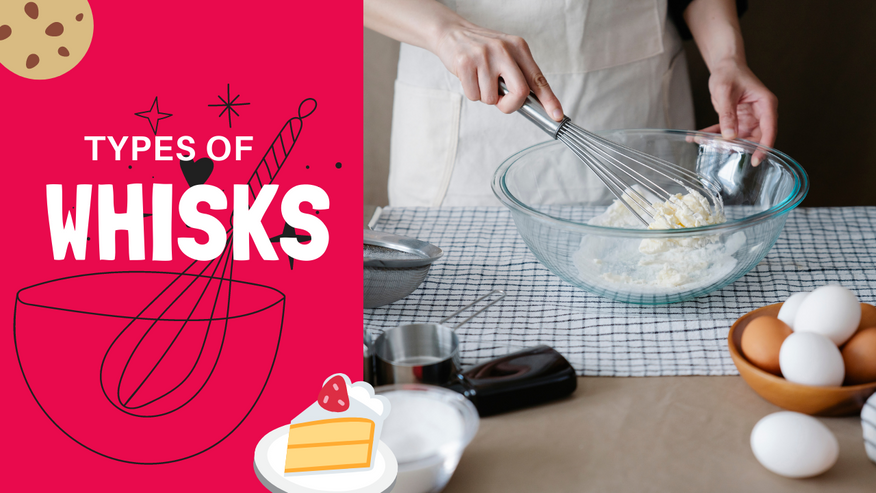Mar 9th 2023 - Team
Types of Whisks and Their Uses
There are many different kinds of this essential kitchen tool, which plays a critical function in simplifying the cooking process by combining ingredients and breaking up lumps. In this article, we dive into detailed explanations of each type and how you can use it.
Types of Whisks
- French Whisk
- Conical Whisks
- Balloon Whisk
- Mini Bar Whisks
- Dough Whisks
- Ball Whisk
- Danish Dough Whisks
- Flat / Roux Whisks
- Silicone Whisks
- Coil whisk
- Cage whisk
- Whisk attachment
What Is a Whisk?
Whisks, or cooking whips, have a narrow handle and wire loops linked at the other. Whisk type affects loop thickness and arrangement. Whisks stir substances or add air.
French Whisk
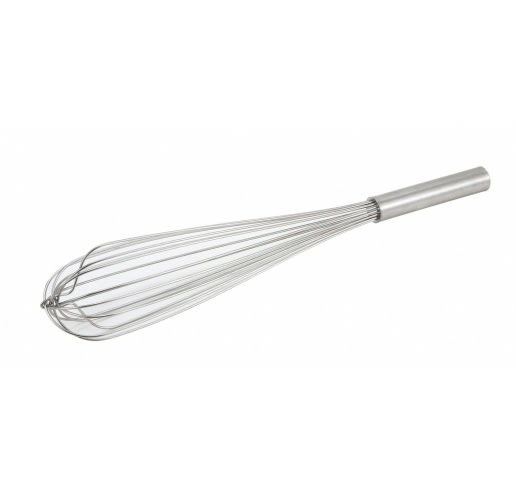
They are able to aerate eggs or cream, fit into compact spaces, work in tight quarters, and emulsify sauces.
The name says it all: whether you're whisking up a typical béchamel or hollandaise, creating a pan sauce with butter, or preparing a French meringue, these whisks are your best friend.
Its design and abundance of tines make them ideal for use in tight spaces, allowing you to easily stir food all the way to the back of a pan or into the recesses of a large pot. However, heavy projects are not best served by so many wires, as they tend to become clogged with thick batters and custards, resulting in the severe loss.
Their cons? The inability to scrape bowls or sauciers, work with dense batters, or maintain motion in dense custards are all areas of weakness.
Winco FN-22 French Whip
Conical Whisks
Thin wires are shaped into an extended conical shape for use in conical whisks. This unique form, which is shaped like a diamond, is made to access food stuck in the nooks of your cooking vessels. These conical whisks are hard enough to replace spatulas or scrapers, and their distinct shape makes them ideal for efficiently folding in all ingredients.
Balloon Whisk
Good for whisking in bowls or sauciers, maintaining a constant motion in custards, blending dry ingredients together, and evening out batters.
Aeration, whipping, and reaching into tight spaces are all weaknesses.
If you're a seasoned baker, you wouldn't really need much but this balloon whisk. It's often used in a stand mixer to make meringues and whipped creams.
Because of its flexible, rounded design, a balloon whisk fits snugly into bowls and sauciers, allowing you to easily scrape the sides and corners.
With only a few tines, this tool is ideal for working with thick batters like the yukone used in my magic bagels and crusty dinner rolls, and its hollow design makes it simple to knock out any stuck ingredients.
While the form is reminiscent of a balloon, "balloon" whisks do not actually assist meringues to rise to the top of the bowl. These whisks are not very good at aeration. Other variants with an extra layer of tines do marginally better.
Mini Bar Whisks
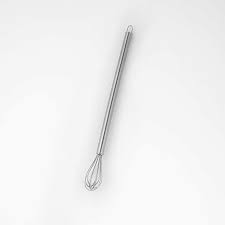
Mini bar whisks are designed specifically for whipping egg whites in a bar setting and these egg whites are used to craft light and airy cocktails such as the gin fizz, champagne flip, or a white lady. The miniature size of these ensures they work in any glass size and fit compactly behind the bar. Because these bar whisks feature the same thin wires and bulbous end as piano whisks, they bring movement to your mixture and add air into your batch of egg whites to create a fluffy, frothy final product bar whips
American Metalcraft SBW9
Dough Whisks
The dough whisk, the most specialized whisk, is comprised of one thick, looping wire that looks like it was fashioned by Alexander Calder.
Its sole purpose is to mix thick, shaggy bread and pastry dough.
Dough whisks are common among serious bakers.
A dough whisk can be used to make decadent desserts or freshly-made bread, such as.
- Brownies
- Muffins
- Pancakes
- Waffles
- No-knead bread
- Scones
- Irish soda bread
Ball Whisk
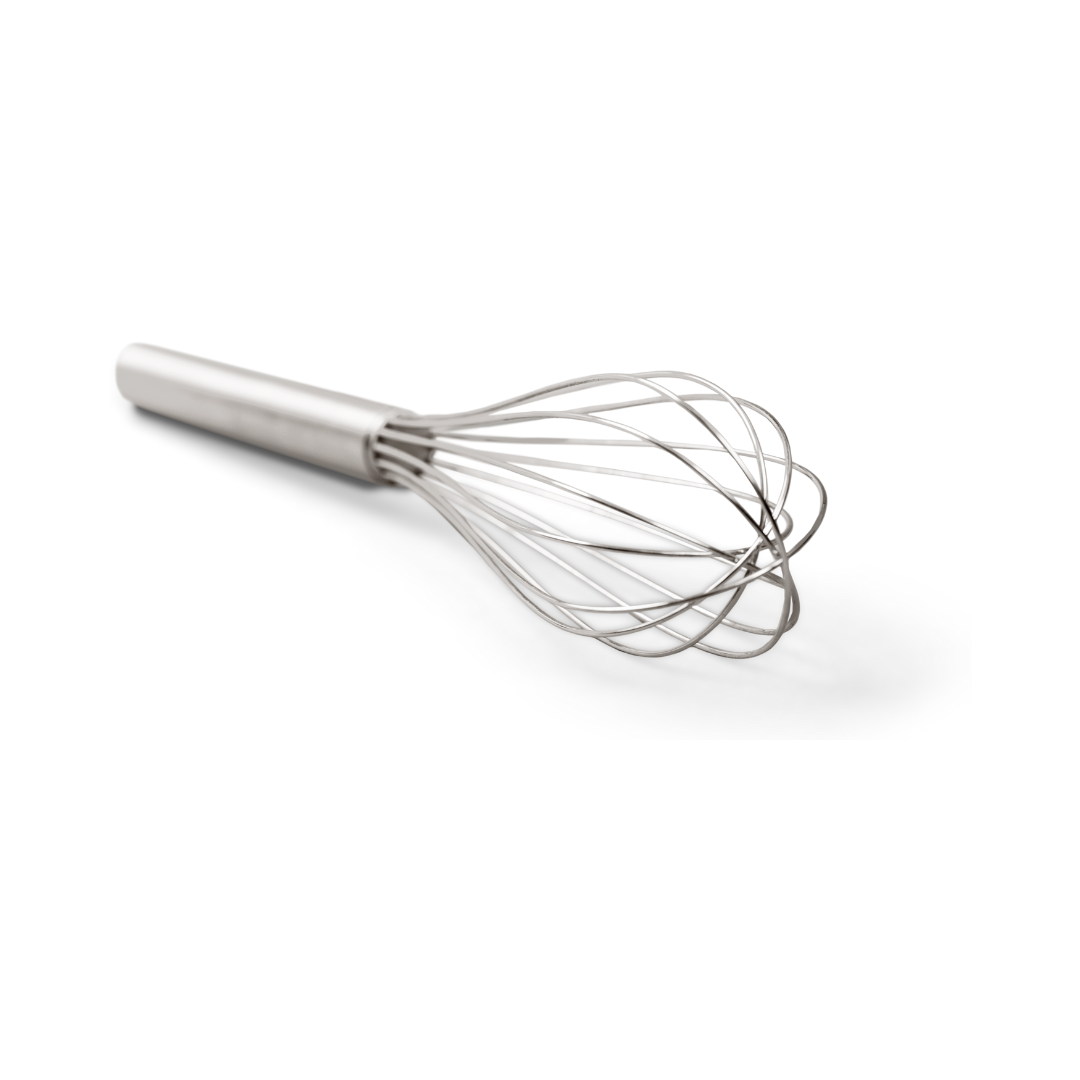
Ball whisks are able to reach awkward places, scrape smooth surfaces, and mix dry materials with ease.
While they may look like a novelty, ball whisks are great for whisking across flat surfaces. Like a large pan while cooking a scrambled bowl of eggs and reaching into sharp corners of a pot where the rounded tines of a balloon whisk won't quite fit.
Its primary function in the home or commercial kitchen is to whisk ingredients in measuring cups, as the flexible tines of a ball whisk allow me to reach all the way into the nooks and crannies. It's more efficient than a regular fork, plus it's longer and easier to use, too.
The tines of a ball whisk tend to collapse to a single point in dense mixtures like custard or heavy batter, making it less effective than a balloon whisk, which has a more open form.
The only cons are that it's pretty hard to use when scraping bowls or sauciers, working with thick batters, and maintaining motion in custards.
Danish Dough Whisks
This type of whisk is proficient at stirring grits and polenta; folding air into components without inflating them; mixing bread doughs and thick batters.
A Danish dough whisk is an indispensable, perfect tool if you choose to work with bread dough by hand. There are many different designs for dough whisks, but in general, they all have a looped top and a pleasant wooden handle. A Danish dough whisk combines the advantages of a wooden spoon and a balloon whisk (without their drawbacks) in that it agitates dough and mixes batters while preventing the formation of flour pockets in the bowl.
However, they are not dishwasher-safe; not great for whipping air into dense combinations like egg whites or cream; not great for making tiny batches of components.
Flat / Roux Whisks
The wires of a flat or roux whisk are looped several times to create a ballooning shape. If you want to get the best possible mixing angle with one of these whisks, you'll need to use a shallow pan. The more the pan is lowered, the flatter the whisk will lay, allowing more area to be whisked. Using the wires' flat surface, cooks can easily scrape leftover food off the bottom of the pan and stir items together.
Silicone Whisks
![]()
They are great for carefully handling delicate tasks; protecting nonstick surfaces; sneaky cooking.
Silicone whisks are must-haves for use with nonstick cookware. Yet silicone has a muting effect, like a suppressor for your whisk, making it useful even with typical metal cookware if you need to keep things quiet in the kitchen. In the wee hours of the morning, the sound of a steel ball whisk clattering around in a bowl may be rather jarring.
The limitations? It's pretty hard to work with dense batters or sustain the motion of heavy custards.
Coil whisk
This whisk has a solitary wire that winds itself into a round profile. Similar in appearance to a balloon whisk, this device consists of a single wire rather than a crisscrossing set. To aerate liquids, this whisk type is pumped up and down rather than being whisked around the bowl. Avoid being confused: you may also hear this referred to as a spiral whisk.
If you're working with a deep pan or another cooking device, adding liquid ingredients is a terrific way to get the sauce or other thick combination off the bottom.
Cage whisk
This peculiar whisk appears to be a balloon whisk into which a little wire "cage" composed of even more looped wires has been inserted. The cage conceals a ball bearing used as a counterbalance. With the help of that inner "cage," even thick mixes can be thoroughly blended into a silky smooth consistency.
Cage whisks are widely used for whipping cream, and for good reason: never before has whipped cream been so luxurious.
Whisk attachment
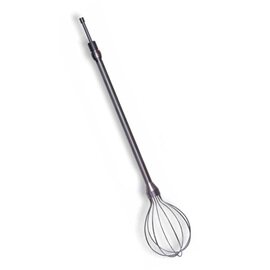
For those who use stand mixers, a wire whisk attachment is available as well. This attachment may be connected to the stand mixer's head. It can be utilized for any task that calls for whisking, and it most closely resembles a balloon whisk in shape.
For beating egg whites for meringues or heavy cream for whipped cream, the attachment comes in extremely handy. Cake batter and cookie dough should be avoided since they can bend metal wires.

